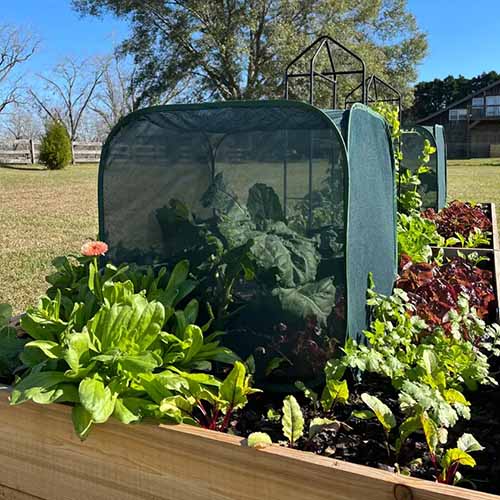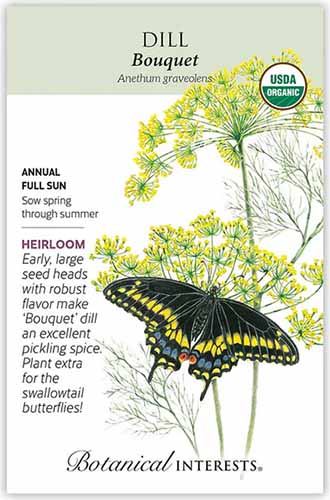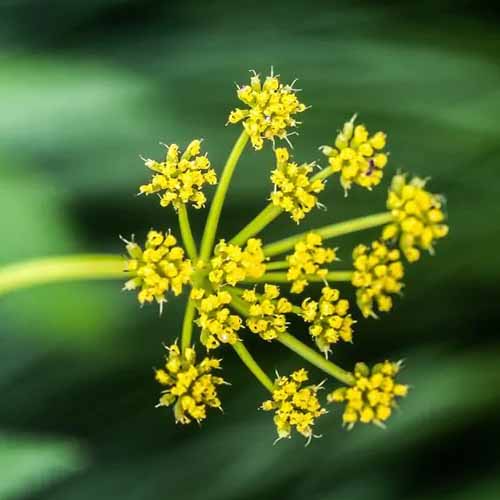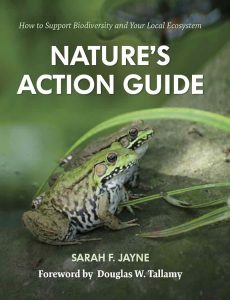
Are you interested in growing carrots and other garden plants to attract black swallowtail butterflies?
These pollinators can make their homes in our gardens at many different stages of their lives. They are a sight to see in the yard or garden – both in their larval forms and when they take flight as winged beauties!
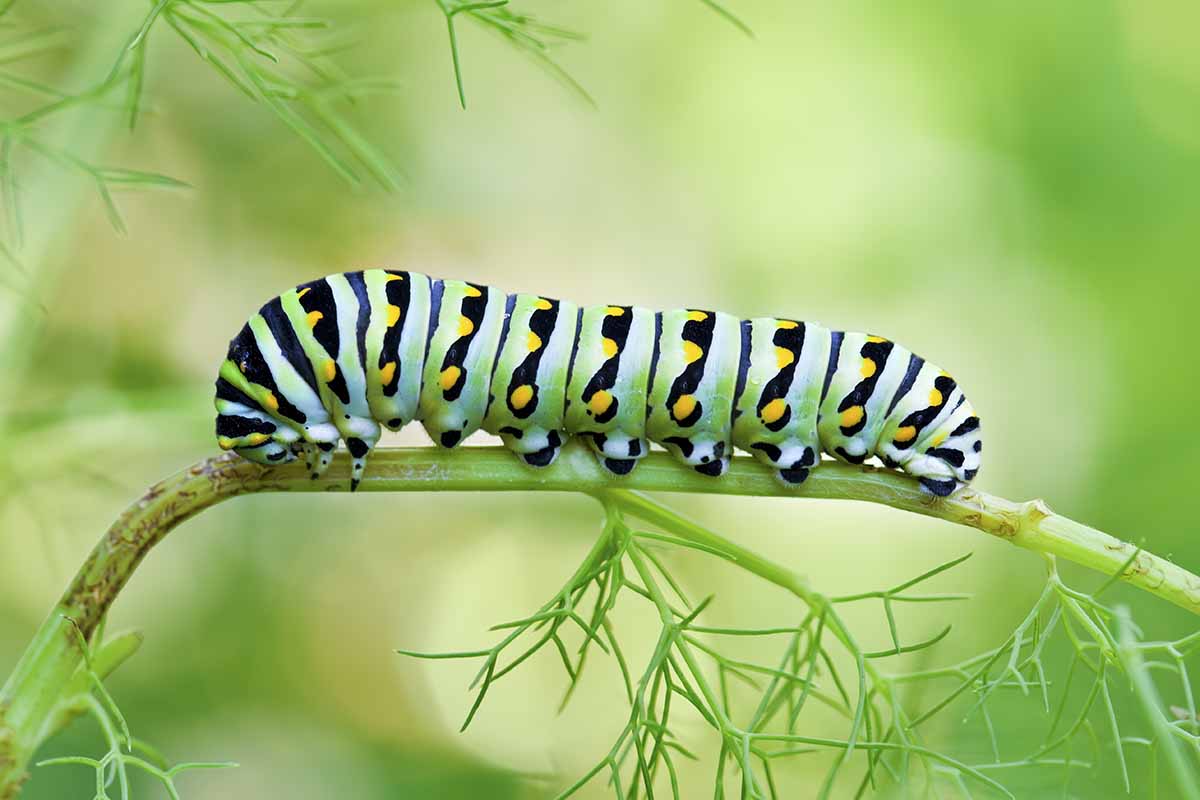
We link to vendors to help you find relevant products. If you buy from one of our links, we may earn a commission.
Whether you want to learn how to attract these pollinators to your yard or are wondering if the caterpillars are going to hurt your carrots or other crops, in this article we’ll provide the answers you’re looking for.
Ready to learn more about these caterpillars and their food preferences? Here’s what we’ll cover:
What Are Black Swallowtail Butterflies?
The black swallowtail butterfly (Papilio polyxenes) is a beautiful winged insect whose native range is in the eastern, central, and southwestern regions of the United States.
These lepidopterans, members of the taxonomic order Lepidoptera, consisting of butterflies and moths, are also found in Canada in Quebec and Saskatchewan, as well as in Central America and the northern part of South America.
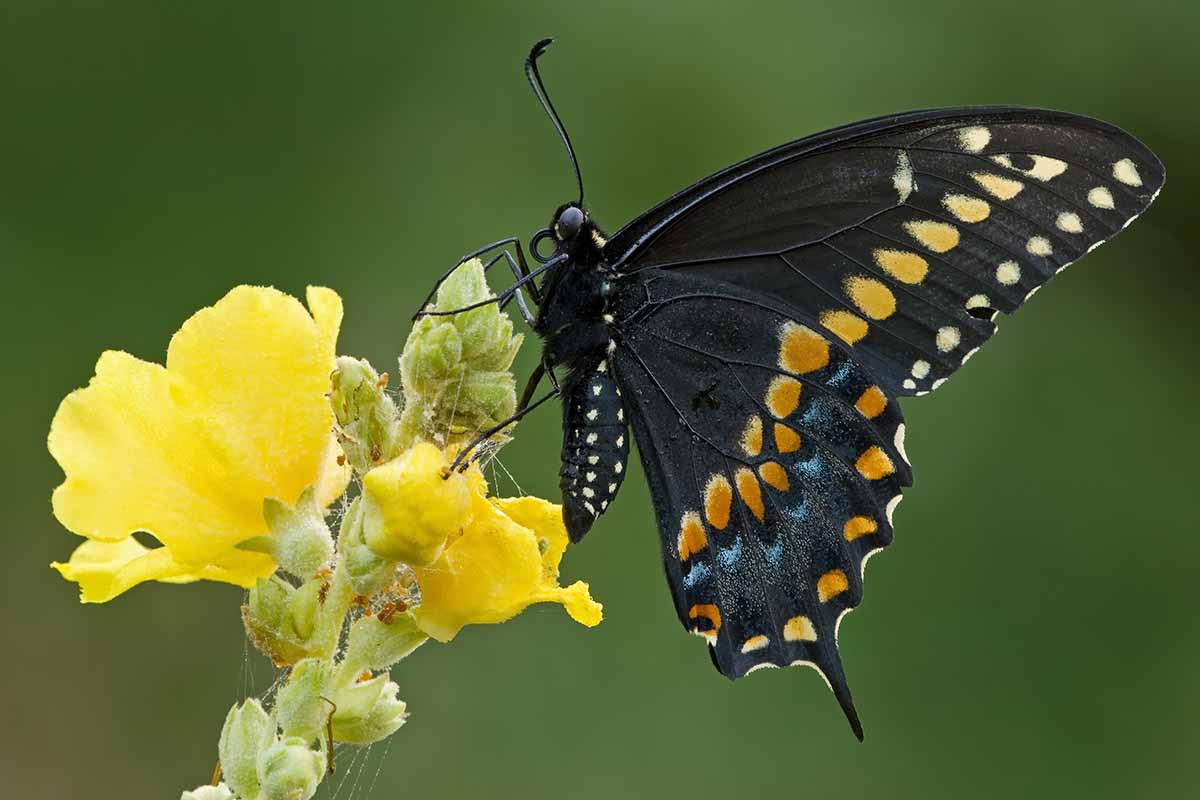
They are large flying insects, with a wingspan of three and a quarter to four and a quarter inches.
Like other species in the Papilionidae or swallowtail butterfly family, these creatures have distinctive lobes on their rear wings, reminiscent of the tails of swallowtail birds.
Also known as American swallowtail, caraway worm, celery worm, parsley swallowtail, parsley worm, or parsnip swallowtail, these butterflies have distinctive markings on both the top sides and the lower surfaces of their wings.
Wings have a black background, and both males and females have a single reddish-orange spot with a black bullseye on the back central edge of each wing. These dots are visible on both the upper and lower wing surfaces.
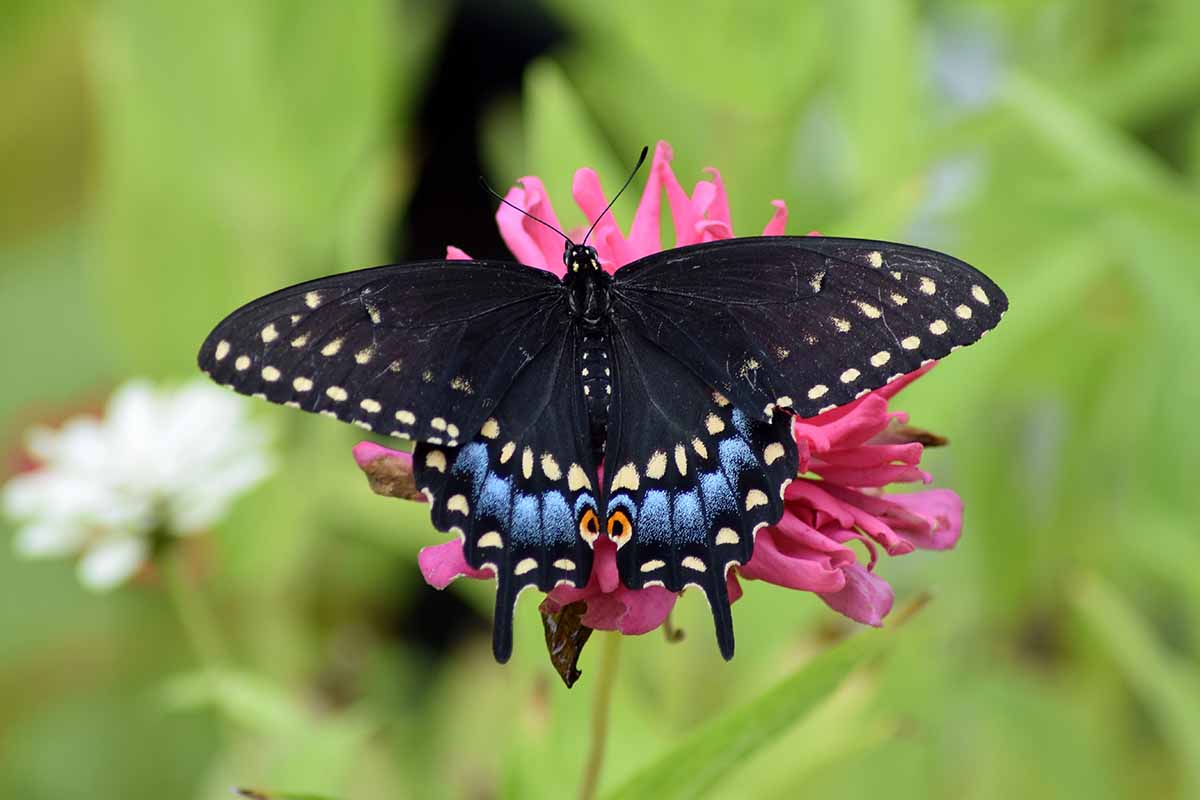
On the top surfaces of the wings, males and females have a row of yellow dots near the edges.
Above those yellow dots, females have a band of blue markings, and small, pale yellow dots above the blue.
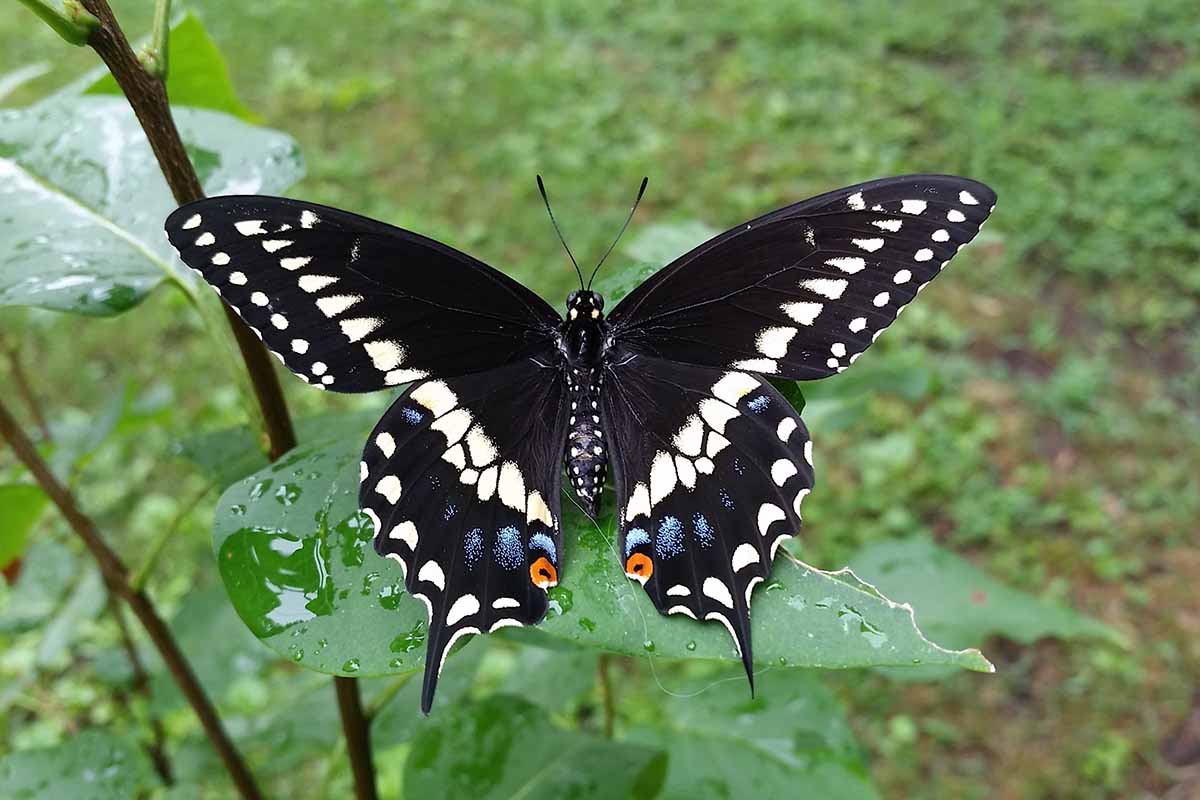
Males, on the other hand, have faint blue dots, with a band of large, yellow dots above the blue.
The undersides of the wings look the same on male and females – and you may not have realized that there are actually two sets of wings, the forewings and the hindwings.
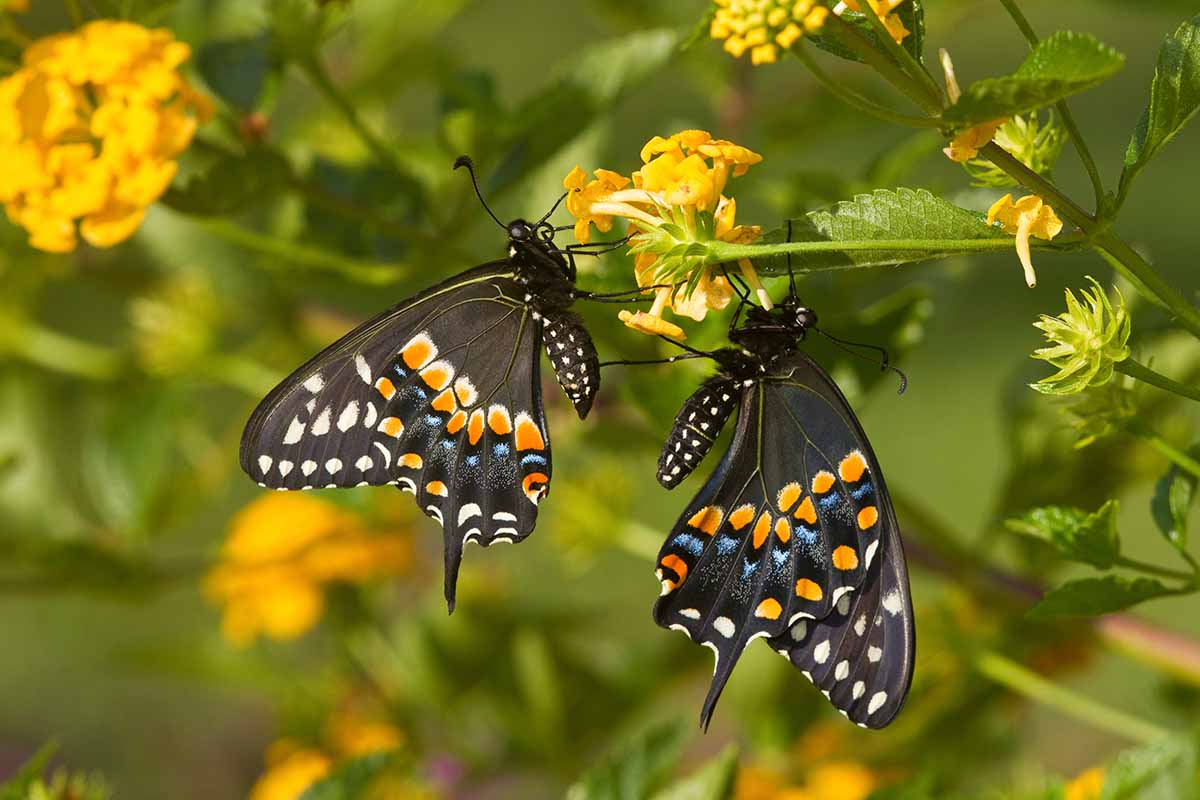
When the wings of these insects are closed, the bottom surfaces are revealed, showing two rows of pale yellow dots on the forewings, and on the hindwings, a powdery looking shading of pale blue between two rows of orange markings.
The Black Swallowtail Life Cycle
If you want to support these pollinators by growing carrots in your garden, you’ll need to know how to recognize them not only in their adult form, but at all stages of their life cycle.
After all, you can’t have butterflies without caterpillars!
This parsley worm life cycle consists of four main stages: egg, larva, pupa, and adult.
Parsley Worm Eggs
Knowing how to recognize the eggs of these lepidopterans is important, especially as you go about harvesting your garden herbs – and veggies such as carrots.
Adult female butterflies lay round, pale yellow eggs on host plants.
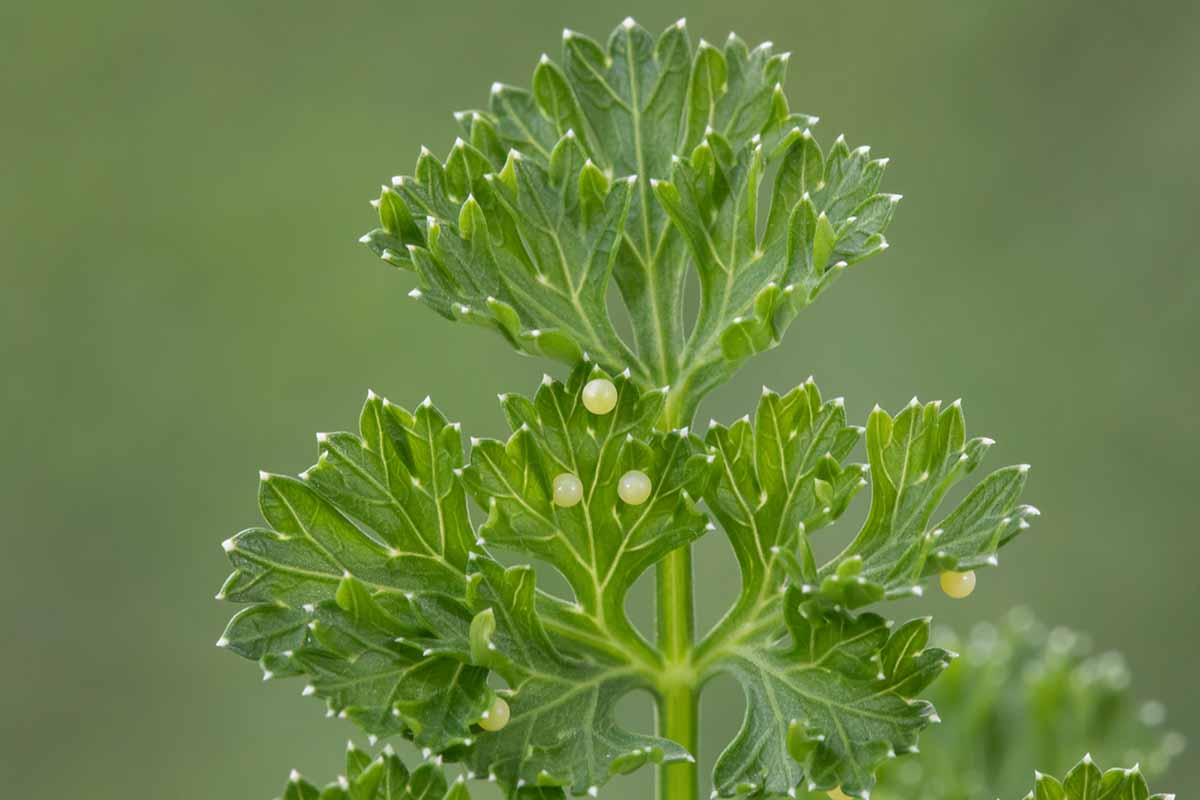
About nine days later, the eggs will hatch. Shortly before hatching though, the eggs turn a dark color, almost black.
You’ll learn more about which host plants are favored later in this article, but those in the carrot family, Apiaceae, such as parsley are clear favorites, so be sure to inspect the foliage for eggs before harvesting.
Luckily, most of us are harvesting our herbs in a cut-and-come-again style, so there should be plenty of foliage to share, allowing you to leave any parsley worm eggs safely attached to the foliage.
Larva
After the eggs hatch, small caterpillars emerge and during a period of 10 to 30 days, these larvae live and feed on host plants, and are only around a sixteenth of an inch long.
During this larval period, caterpillars grow into five different stages, called instars.
As they transition to each new instar, the larva molts, leaving its old skin behind and emerging bigger than it was before.
First Instar
First instar larvae, that’s to say the youngest and tiniest parsley worm caterpillars, are black with a white mark in the middle, often referred to as a saddle.
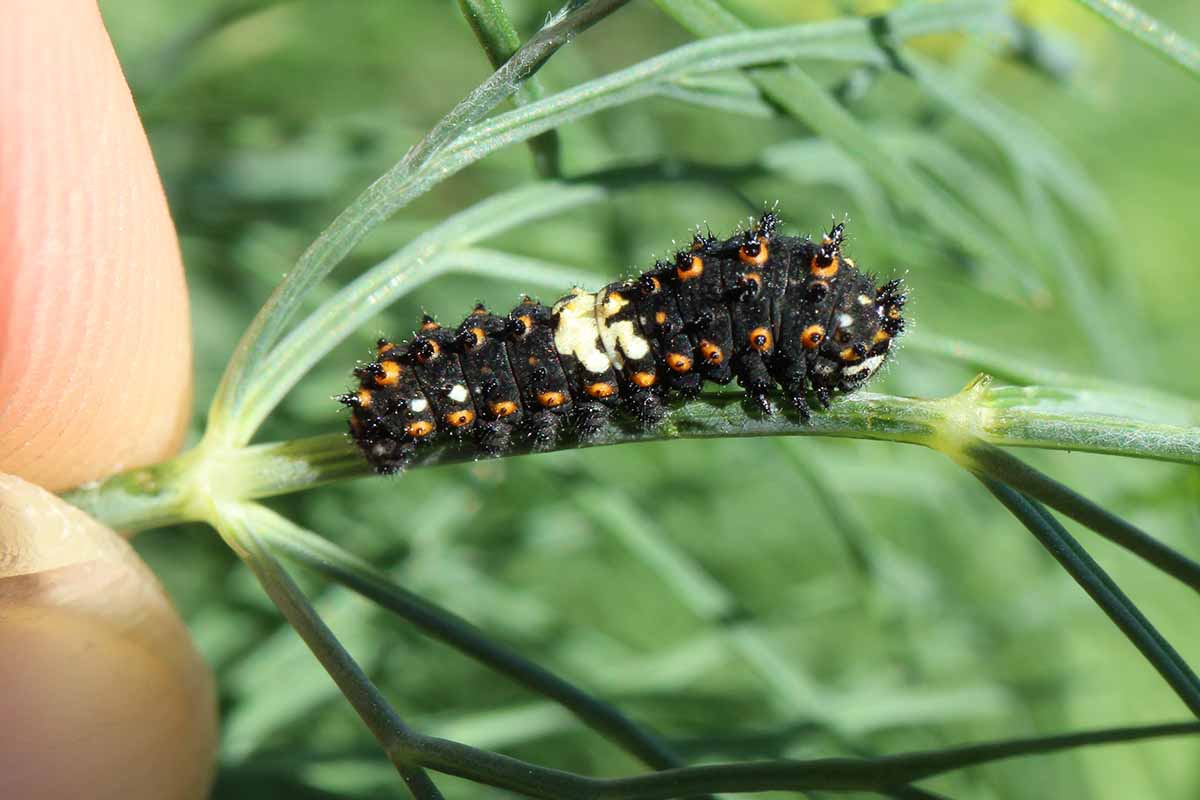
They are about an eighth of an inch long, and also have orange spots and black spikes.
This coloration serves as camouflage, making these caterpillars look very much like bird droppings!
Second Instar
As larval caterpillars grow, they enter the next stage known as the second instar, reaching about a quarter of an inch long.
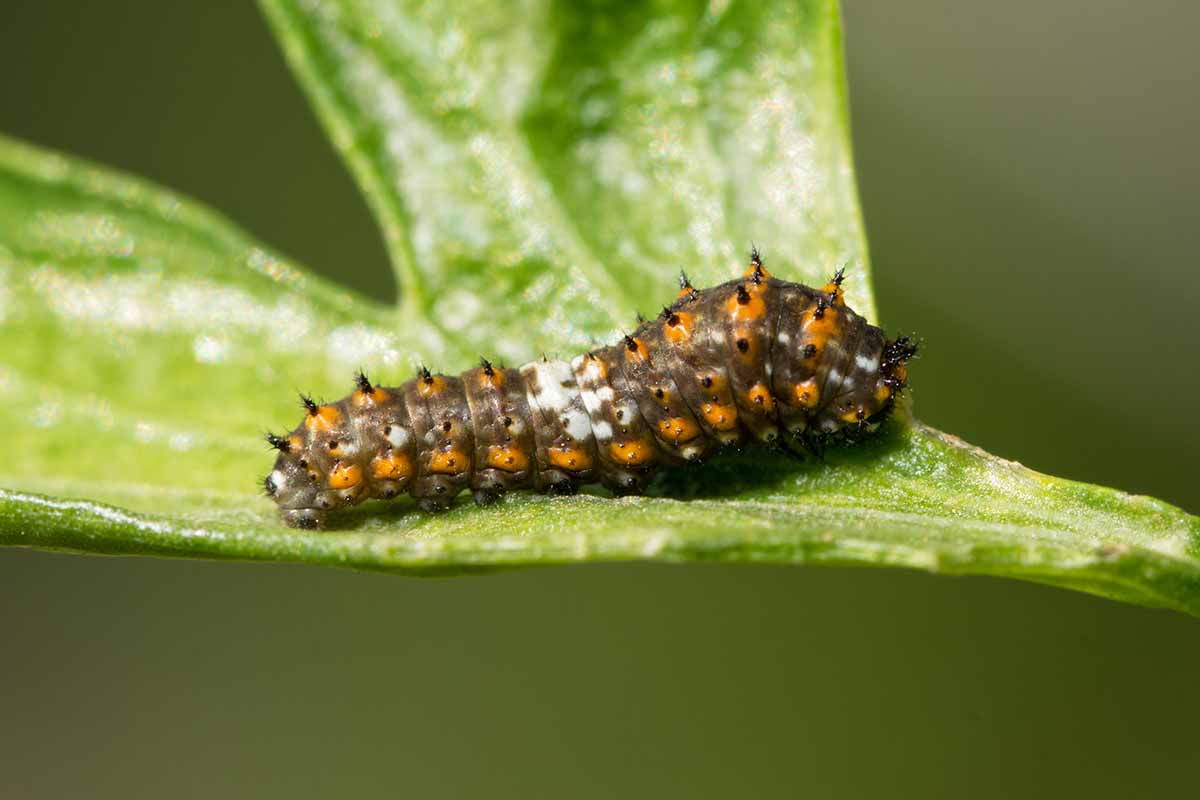
In this stage the caterpillars are black with orange spots and black spikes which are actually hairs. The white saddle is no longer very distinct.
Third Instar
When one of these caterpillars molts and emerges as a third instar, it is bright green or white with black stripes and orangish yellow spots.
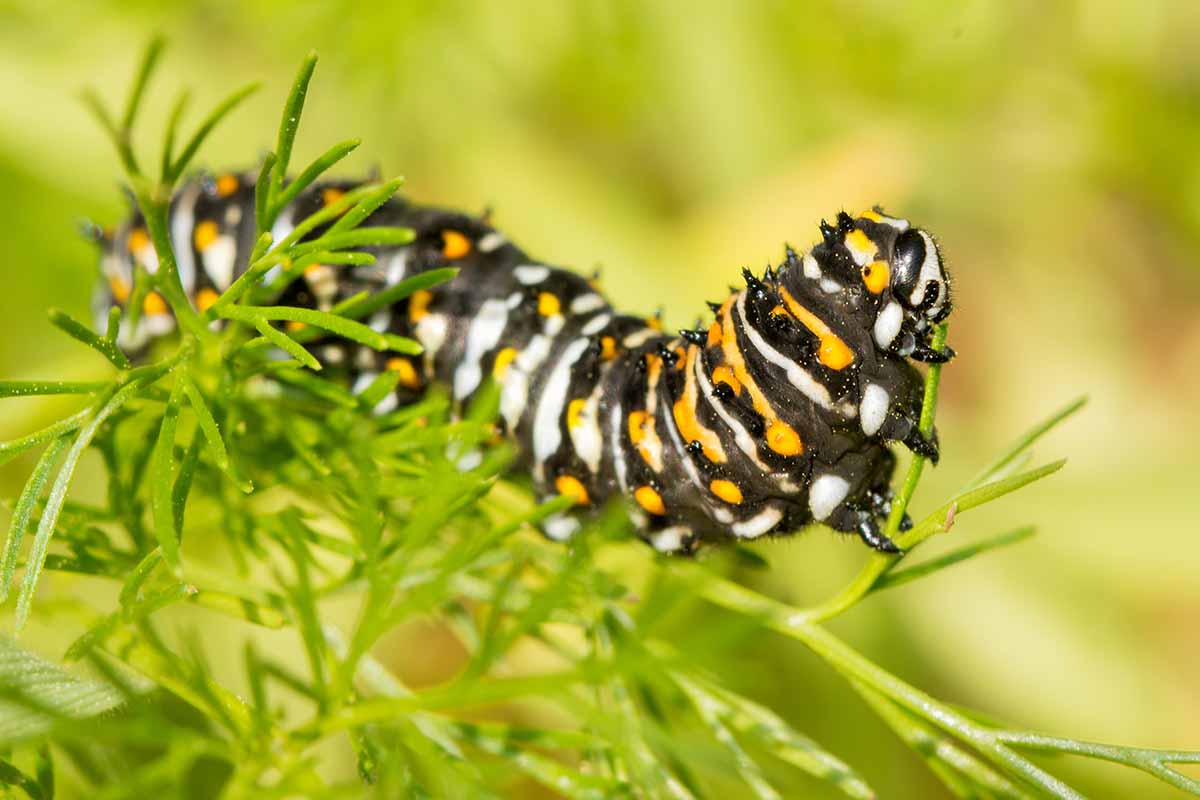
At this stage, the parsley worms still have little spikes on their bodies and are about half an inch long.
Fourth Instar
In their fourth instar, the striped coloration is more defined, and it grows even larger and now has white prolegs with black dots.
The spikes on the body are no longer present and by this stage the caterpillars are around an inch long.
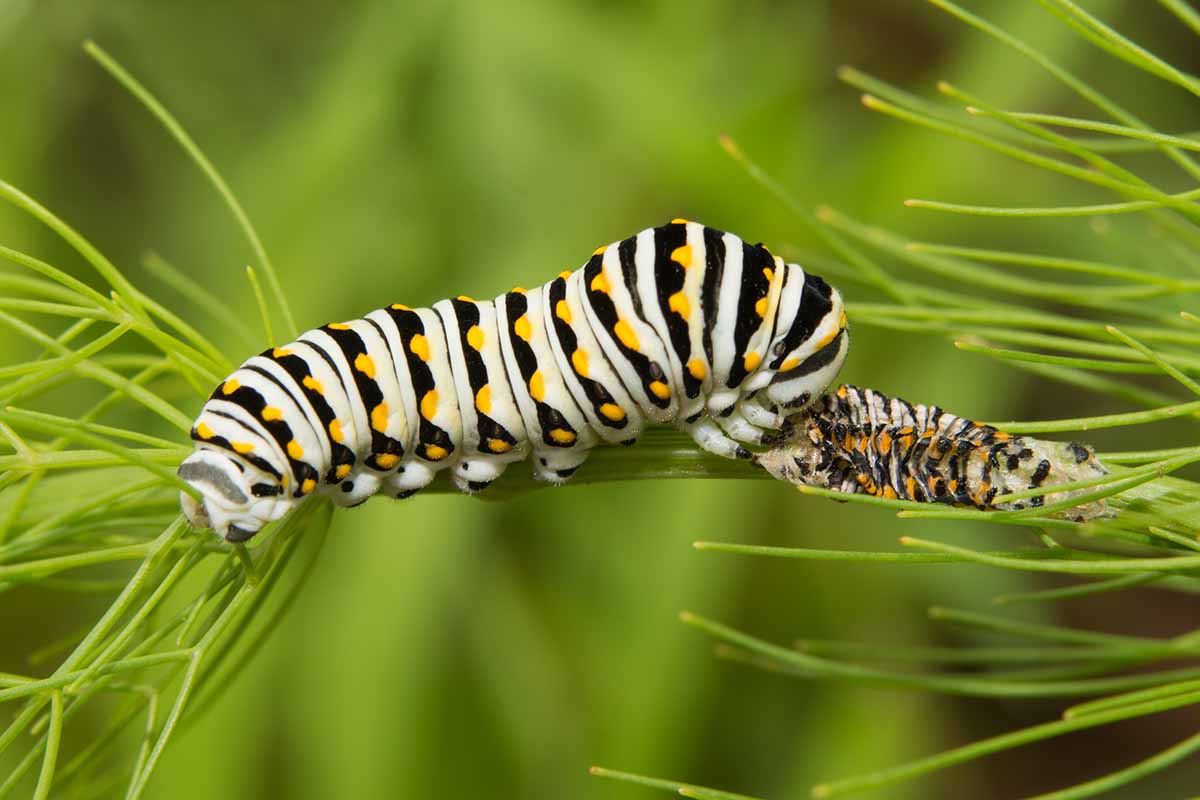
Throughout the larval stages, after parsley worms step out of their old skins, they use these discarded layers as a nourishing meal.
Fifth Instar
The fifth instar is the last larval stage.
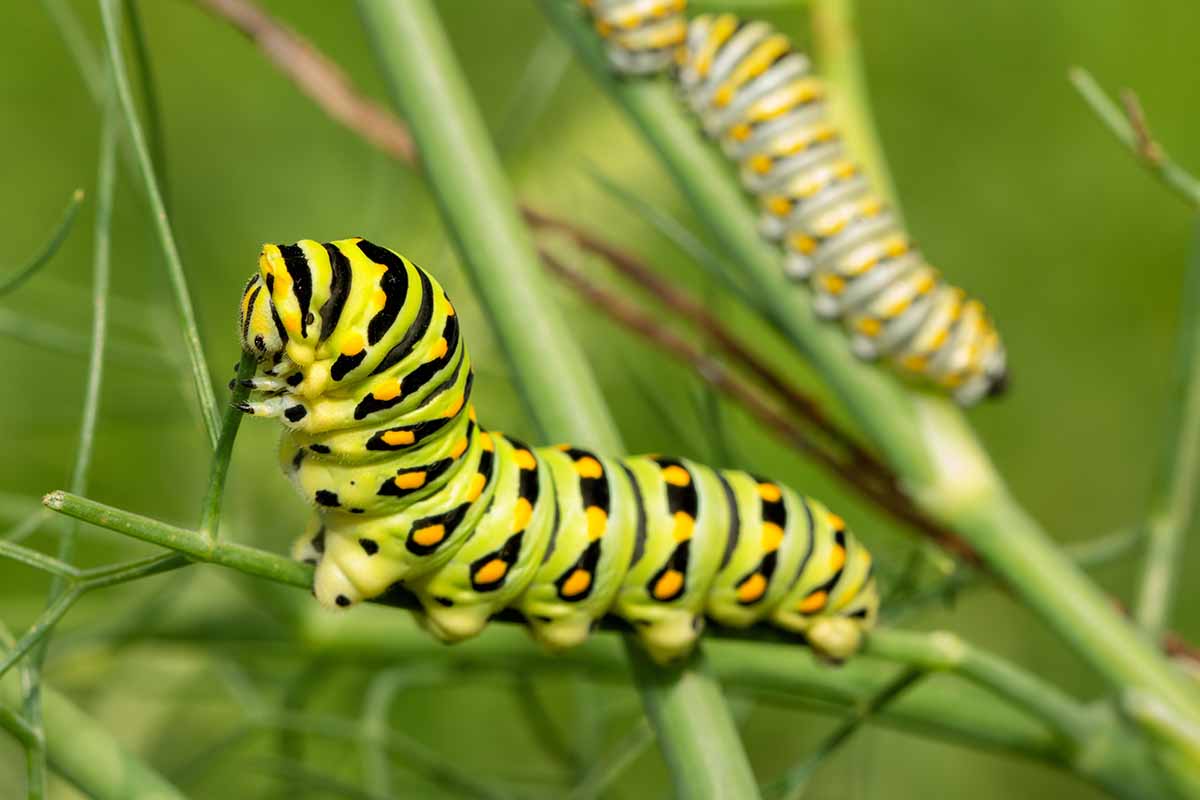
In this phase, these caterpillars are much easier to spot in the garden because of their large size, at this stage they are about two inches long.
You may have had these larvae living on the carrots in your garden without noticing them until now!
Pupa
After the fifth instar, the caterpillar is ready to pupate, beginning its metamorphosis into a butterfly.
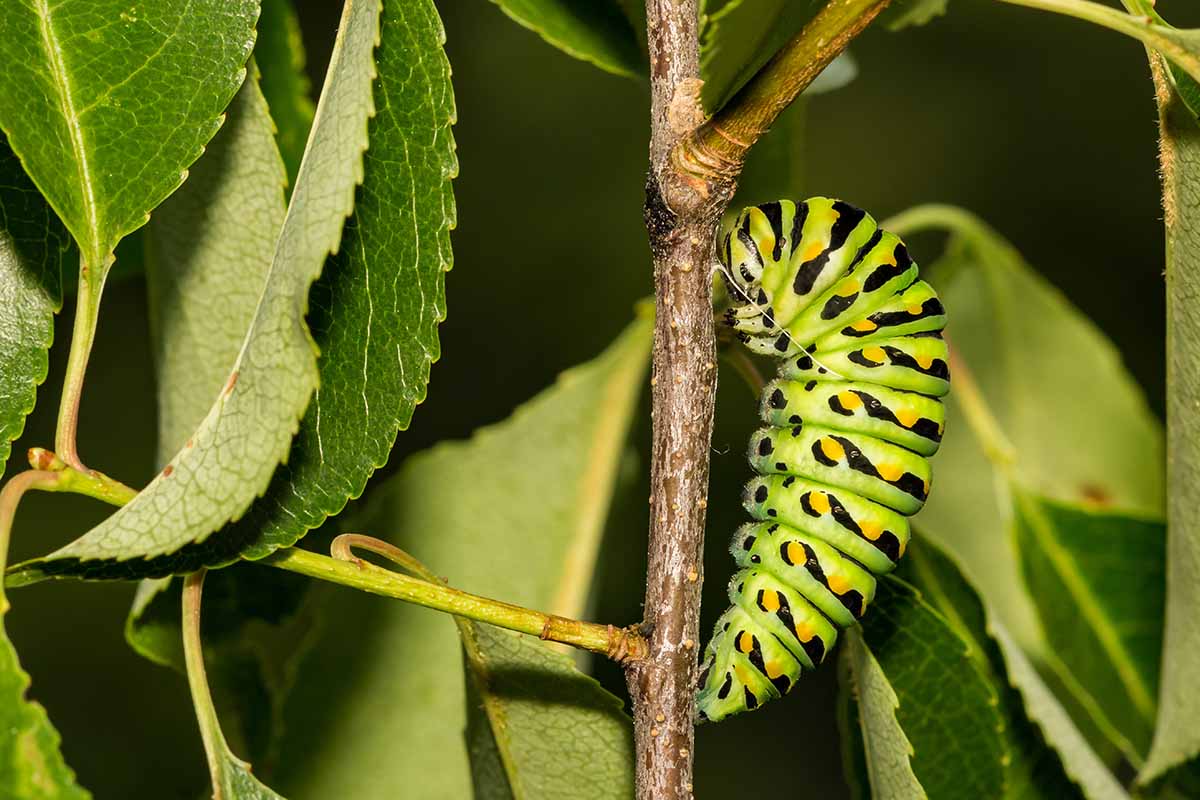
To anchor itself for this phase, the caterpillar attaches itself to a stem with a silk sling, with its head pointed upwards.
Within a day or two, it will shed its skin yet again, revealing the chrysalis.
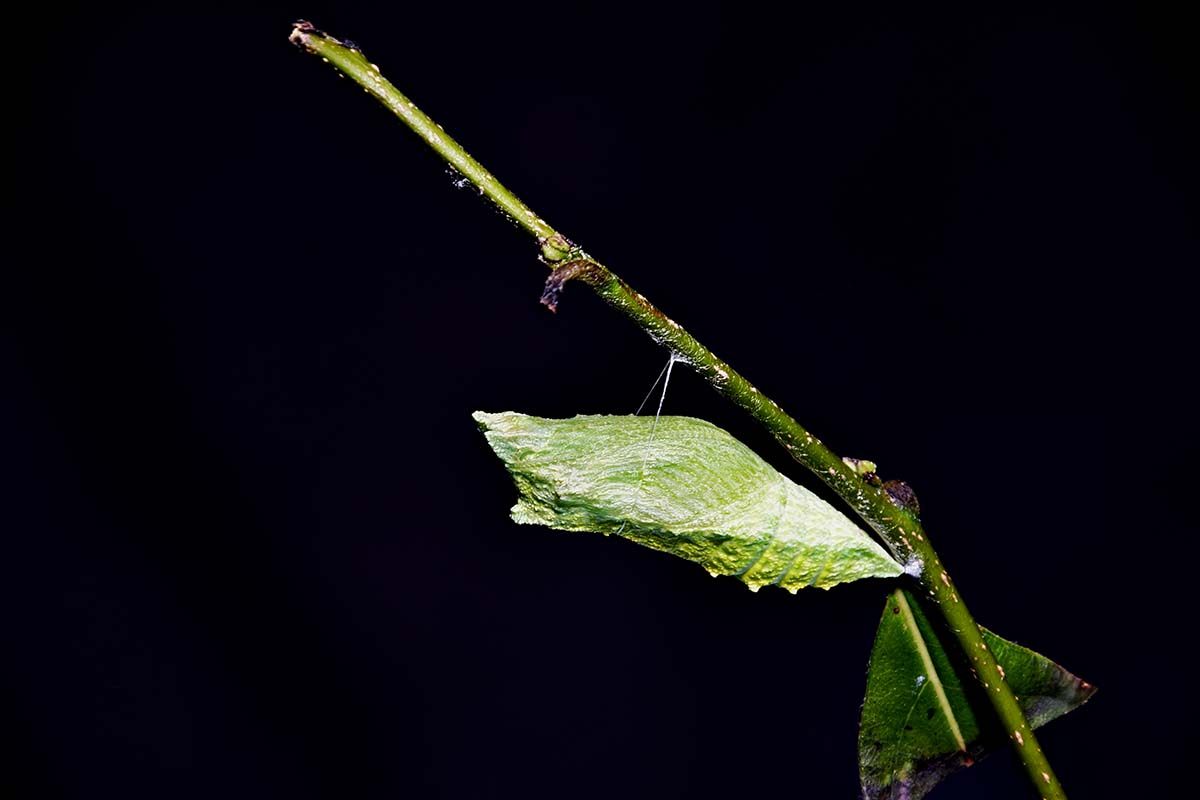
The chrysalis can be green or brown, depending on the season and the type of stem the pupa is anchored to. The color of the chrysalis will blend into its surroundings.
Butterfly
During spring and summer, the pupal stage lasts for up to 18 days. Some pupae also overwinter, waiting for spring before coming out of their chrysalises.
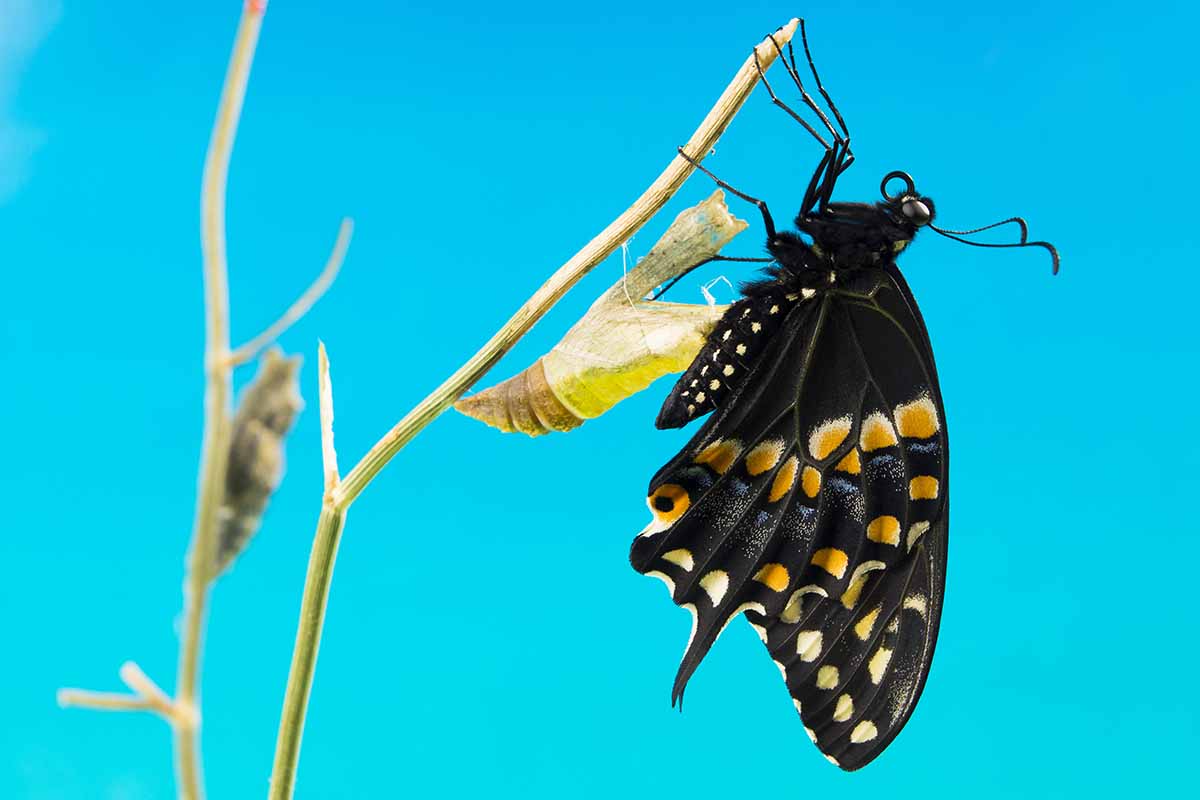
Once a butterfly emerges from its chrysalis, this flying bug with a three- to four-inch wingspan is ready to start looking for a mate.
Females then lay eggs on host plant material such as carrot leaves and the cycle continues.
Do Parsley Worms Damage Carrots?
Now that you know how to recognize these fascinating insects in all their life stages, are you wondering if they are garden friends or foes?
Black swallowtail butterflies are considered pollinators, although they may not be quite as efficient at this task as bees.
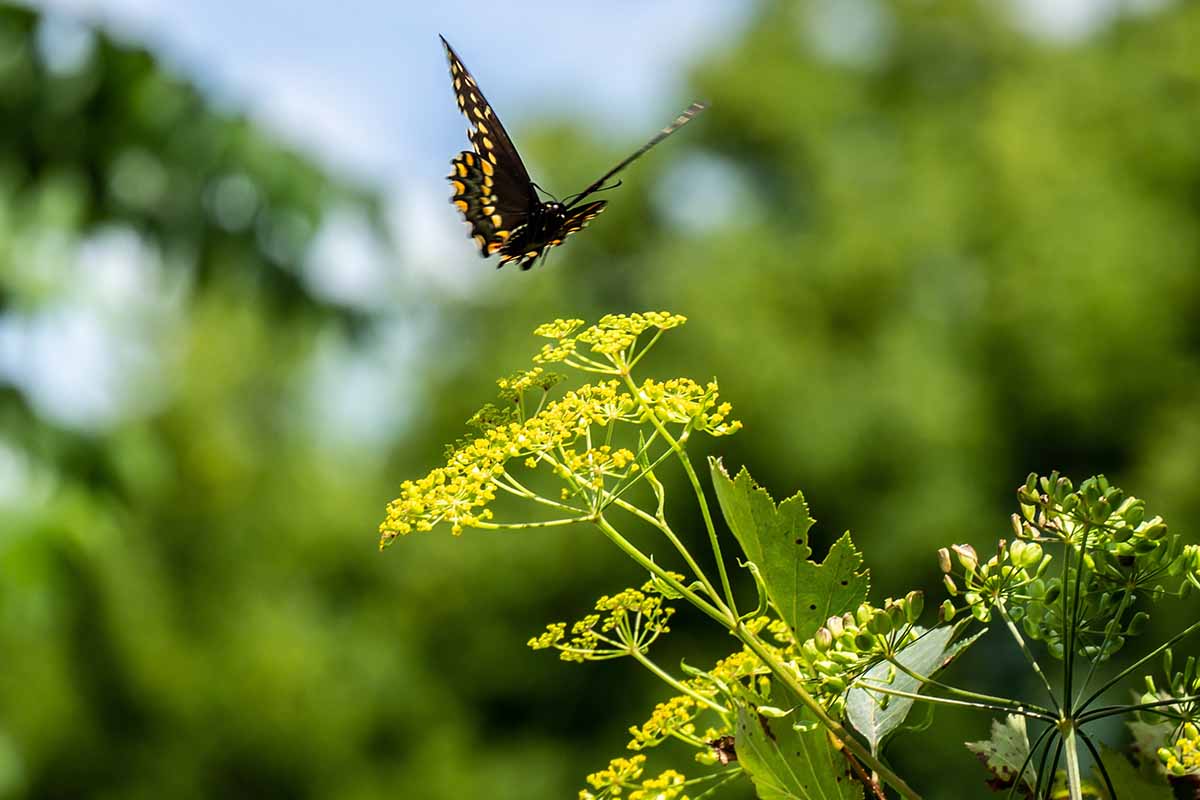
While they may not be as efficient as bees for pollinating crops, since butterflies fly long distances, they help ensure genetic diversity in plants by transferring pollen from flower to flower.
That means we should consider them to be beneficial insects in our gardens to some degree!
Of course, then we have to consider any damage that black swallowtail butterfly larvae might do to our crops.
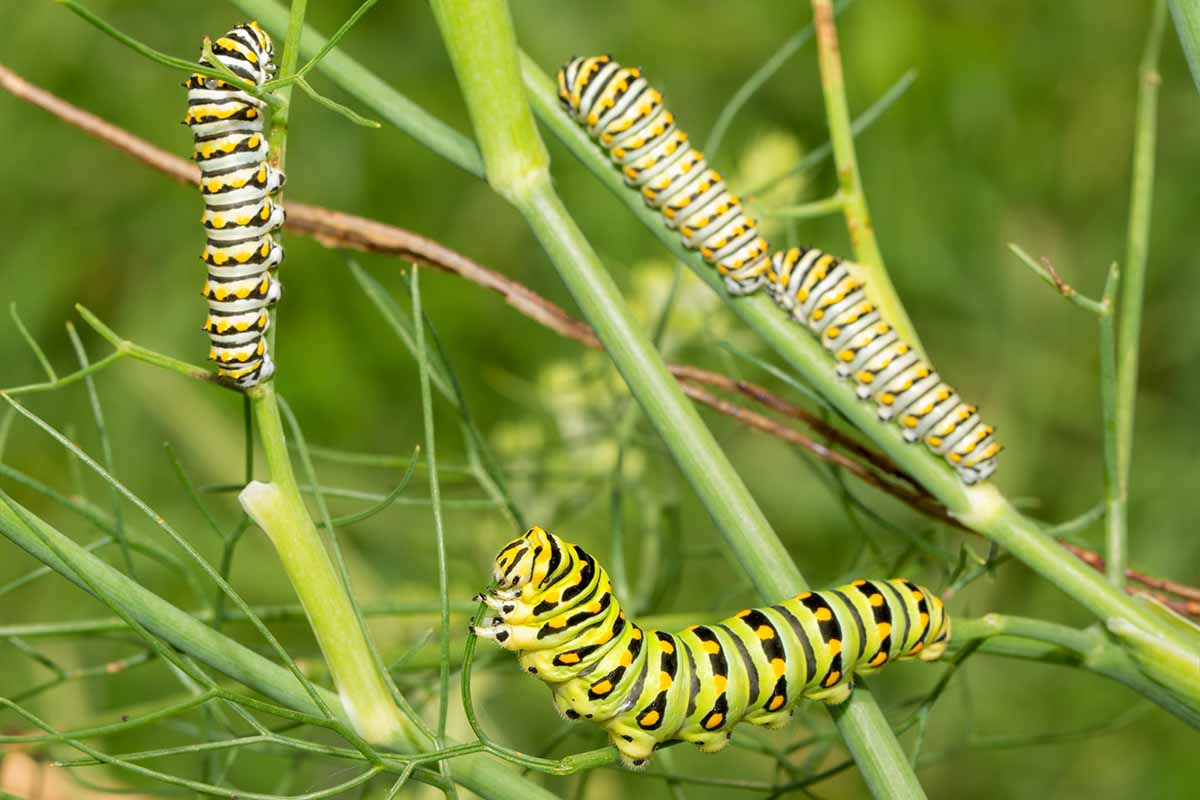
There has to be considerable damage to the crop before pesticide use is warranted – something that large scale farmers are well aware of, but backyard gardeners may not consider.
In most cases, the presence of parsley worms does not do enough damage to crops to warrant considering them as pests.
Nonetheless, when these caterpillars are numerous in the garden, there are times when they may eat more herbs or veggie greens than you had hoped.
To prevent crop loss, rather than resorting to chemical controls, consider using obstacles to keep these insects away from plants you may want to protect, such as carrots.
Pest Control Pop Ups are cages made with steel supports and nylon mesh fabric that help keep adults from landing on your crop to lay eggs.
Pest Control Pop Ups are available in three sizes: two-by-two feet, four-by-four feet, and four-by-eight feet. You can purchase them from Gardener’s Supply.
If you already have caterpillars munching on your crops and are looking for an ethical solution to protecting your herbs or veggies, consider relocating these insects to wild host plants such as Queen Anne’s lace.
Keep reading to learn about more host plant options for these pollinators – that’s our next topic!
Carrots and Other Host Plants for Parsley Worms
You now know what to expect from these butterflies, and it’s time to learn how to attract them by providing them with food in a wildlife-friendly garden.
These butterflies use umbellifers – also known as Apiaceae or members of the carrot family – and other similar plants as larval host plants.
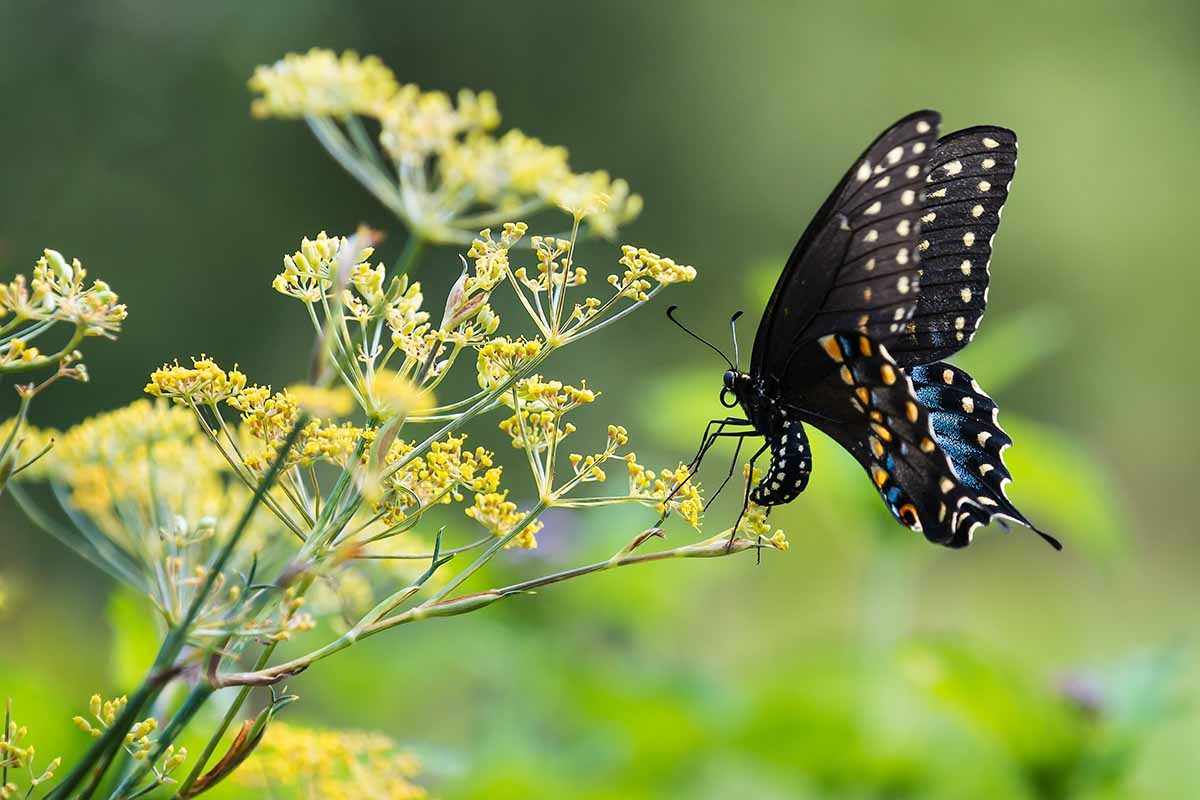
Are you wondering what the term “host plant” means exactly?
When females are mature and ready to lay eggs, they seek out egg-laying locations that will provide suitable food, known as host plants, for their offspring.
Some insects need specific types of plants for their babies.
Carrots are a favorite host plant, but they aren’t the only option. These butterflies can also use other members of the carrot family that are common in vegetable gardens including parsley, fennel, and celery.
Another carrot relative, dill, is popular with these insects and other beneficial insects as well – I wouldn’t grow a wildlife-friendly garden without it!
You can find packets of dill seeds available at Botanical Interests.
In addition to Queen Anne’s lace, there are some other carrot relatives that can serve as hosts for black swallowtail butterfly larva as well.
These include poison hemlock (Conium maculatum), water hemlock (Cicuta maculata), wild parsnip (Pastinaca sativa), and golden alexander (Zizia aurea).
Golden alexander is a wildflower in the carrot family that’s indigenous to eastern and central North America and can be used in native plant landscaping to help support wildlife.
You’ll find golden alexander plants at Nature Hills Nursery.
Other plants besides members of the Apiaceae family can serve as larval hosts for parsley worms too.
These include some plants in the citrus family, Rutaceae, such as mock bishopweed (Ptilimnium capillaceum), roughfruit scaleseed (Spermolepis divaricata), water cowbane (Oxypolis filiformis), and wedgeleaf eryngo (Eryngium cuneifolium).
More Tips for Supporting Black Swallowtails
While providing these butterflies with carrots and some of their other favorite host plants will go a long way toward supporting them, there are more actions you can take as well.
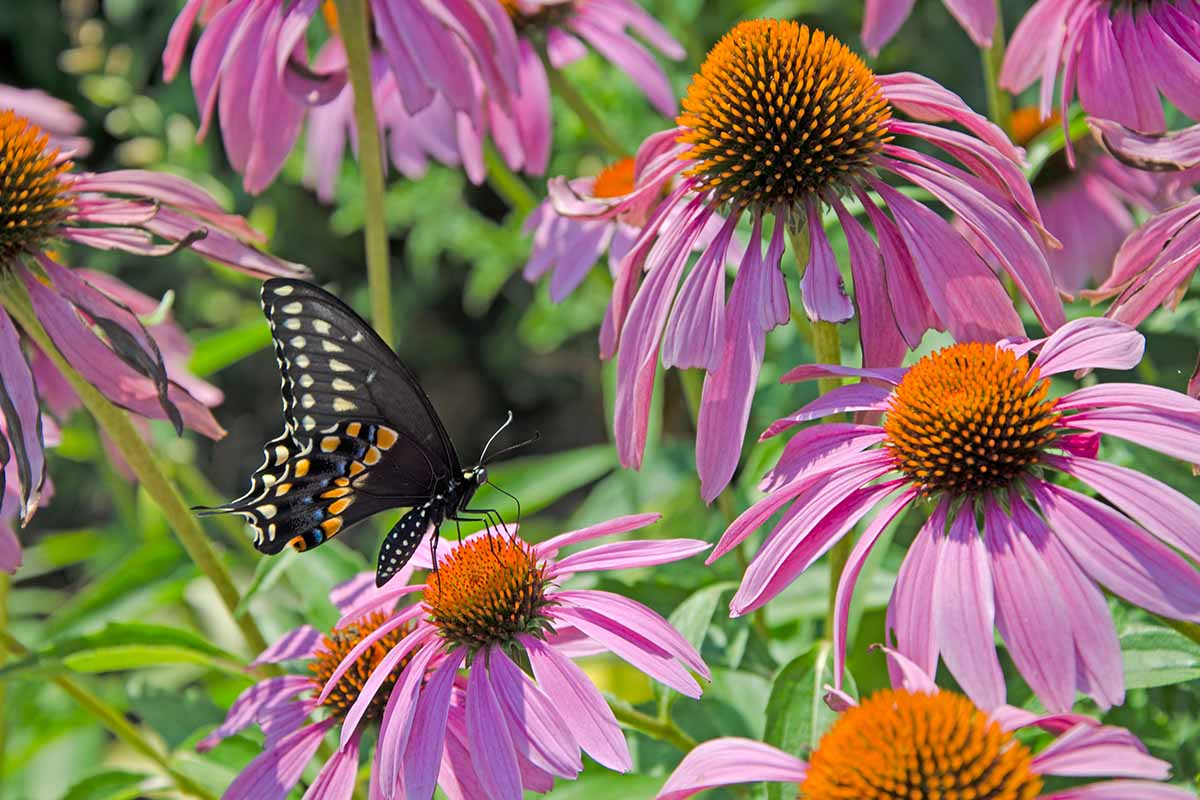
The host plants listed above are species that the swallowtail caterpillars can subsist on – but swallowtail butterflies need nectar!
Adults can forage from a wide range of plants including clover, cosmos, milkweed, phlox, thistles, zinnias, and purple coneflowers.
You can find purple coneflower plants available at Nature Hills Nursery.
In addition to providing nectar plants, it’s important to avoid using both pesticides and herbicides in your yard and garden.
Even certified organic pesticides like neem oil will harm these pollinators, so try to take other measures before applying anything that may be toxic.
Want to learn more? Read our article to learn more about integrated pest management.
More Butterflies, More Beauty
As you’ve learned today, black swallowtail butterflies love to lay their eggs on members of the carrot family, which provide food for their young.
These caterpillars don’t usually constitute a pest problem on carrot plants, but if necessary, they can be excluded from crops with cages or relocated to other host plants.
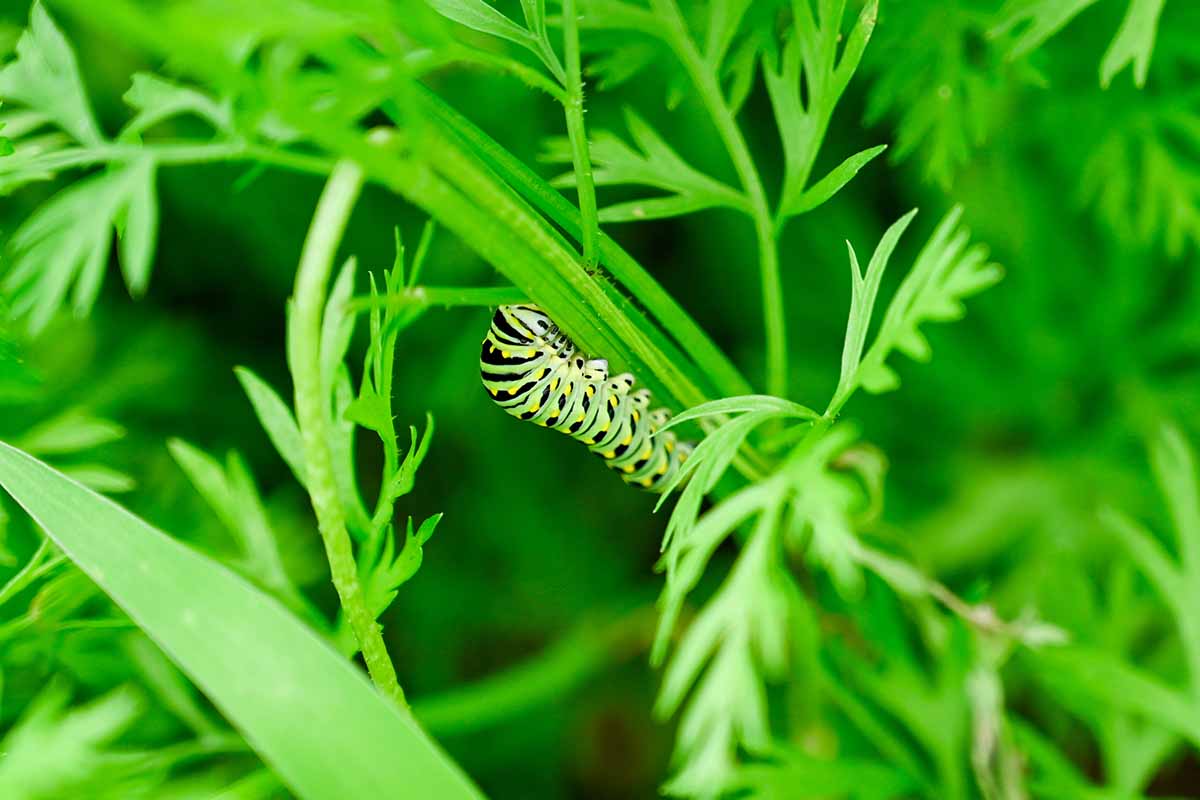
Are you trying to attract parsley swallowtails to your yard?
Tell us about your connection with these beautiful butterflies in the comments section below – and if you have any questions, be sure to drop them there too!
And while you’re at it, why not share photos of the parsnip swallowtails in your garden patch?
While you’re here, do you need more tips for growing a bountiful carrot crop? We have plenty of tips for you right here:
